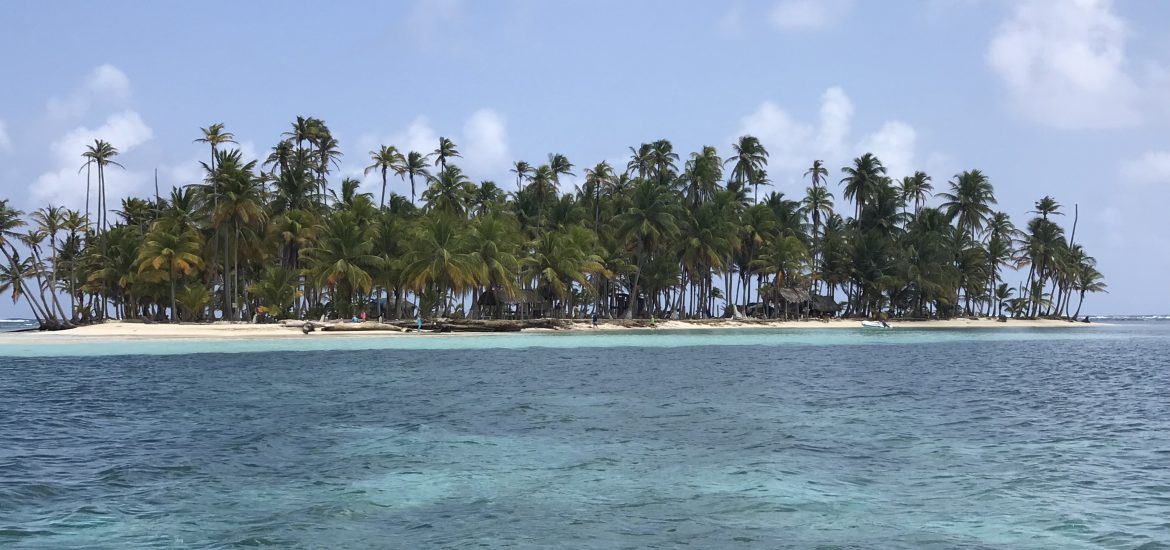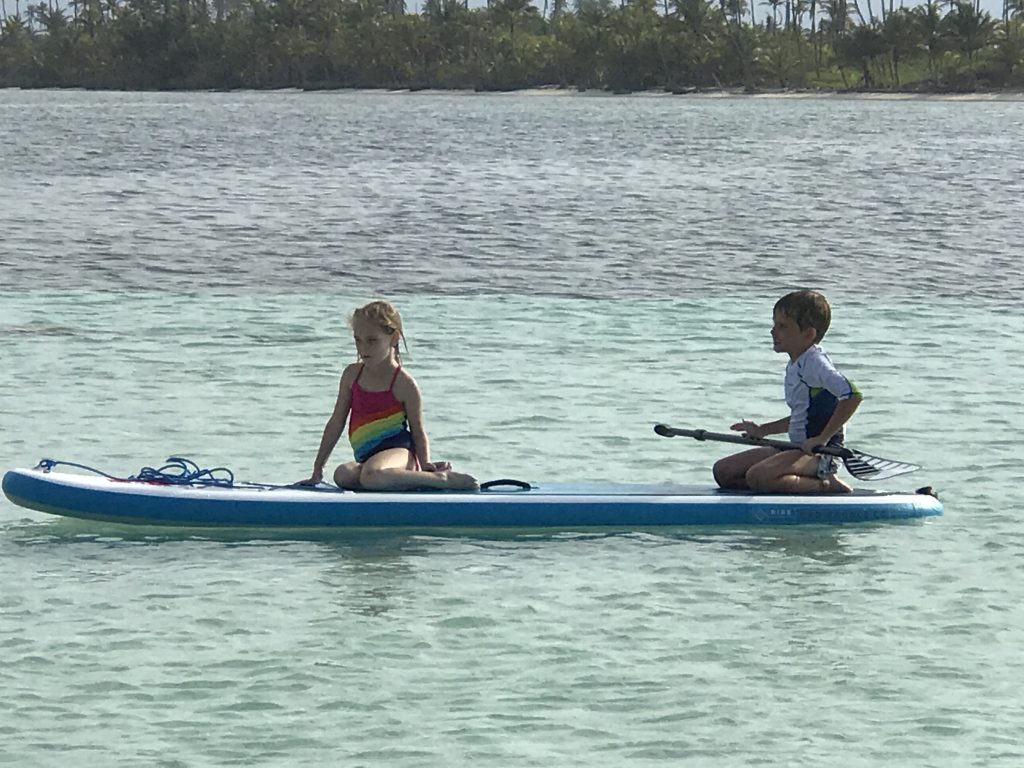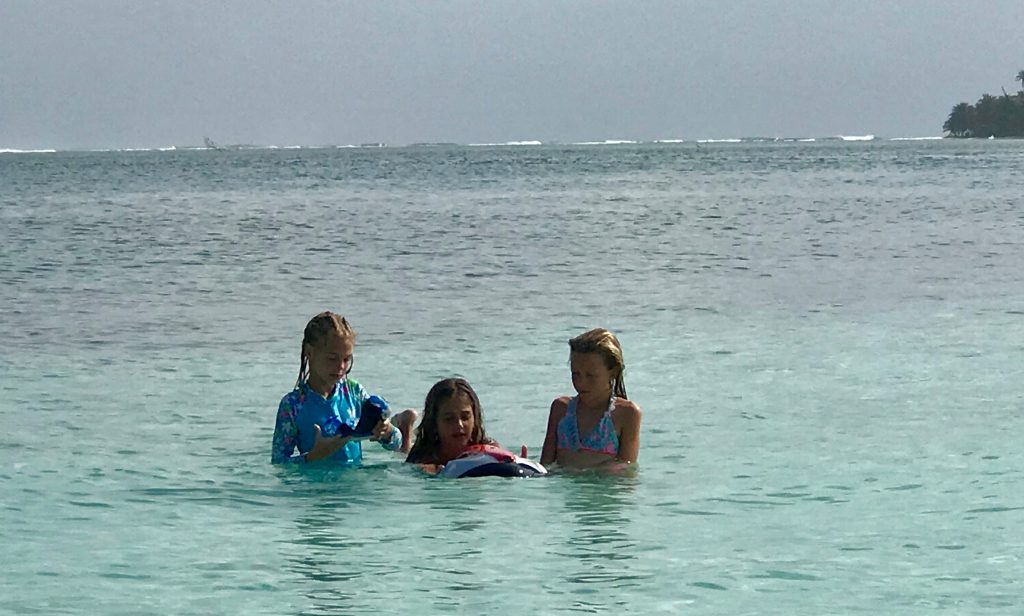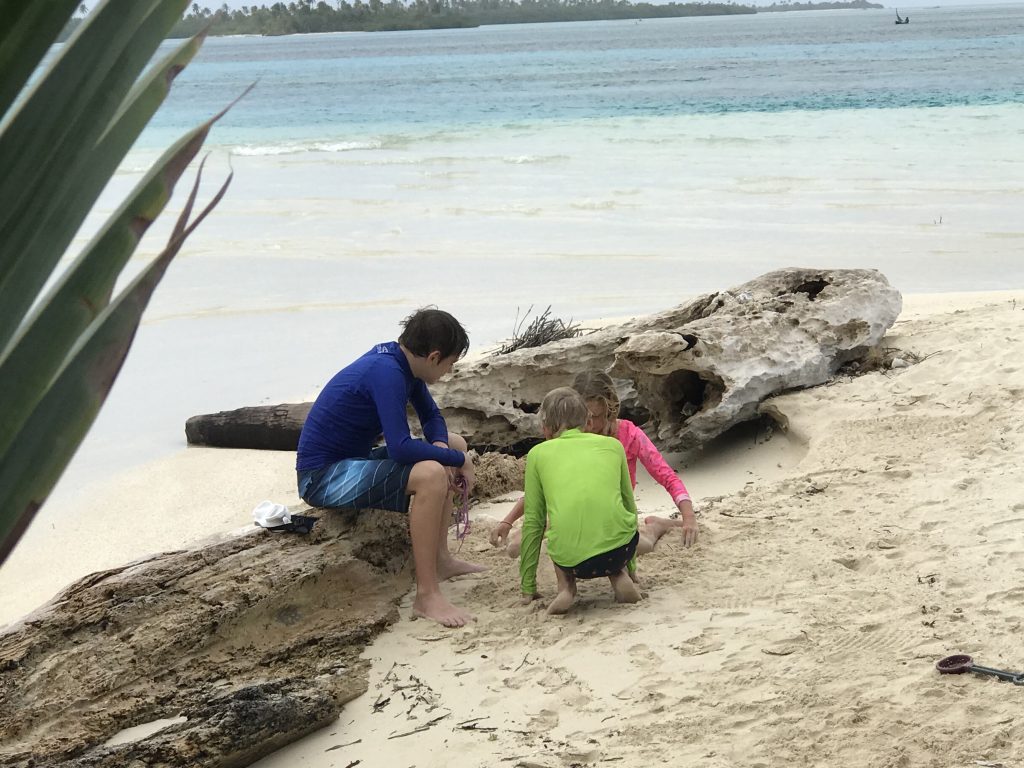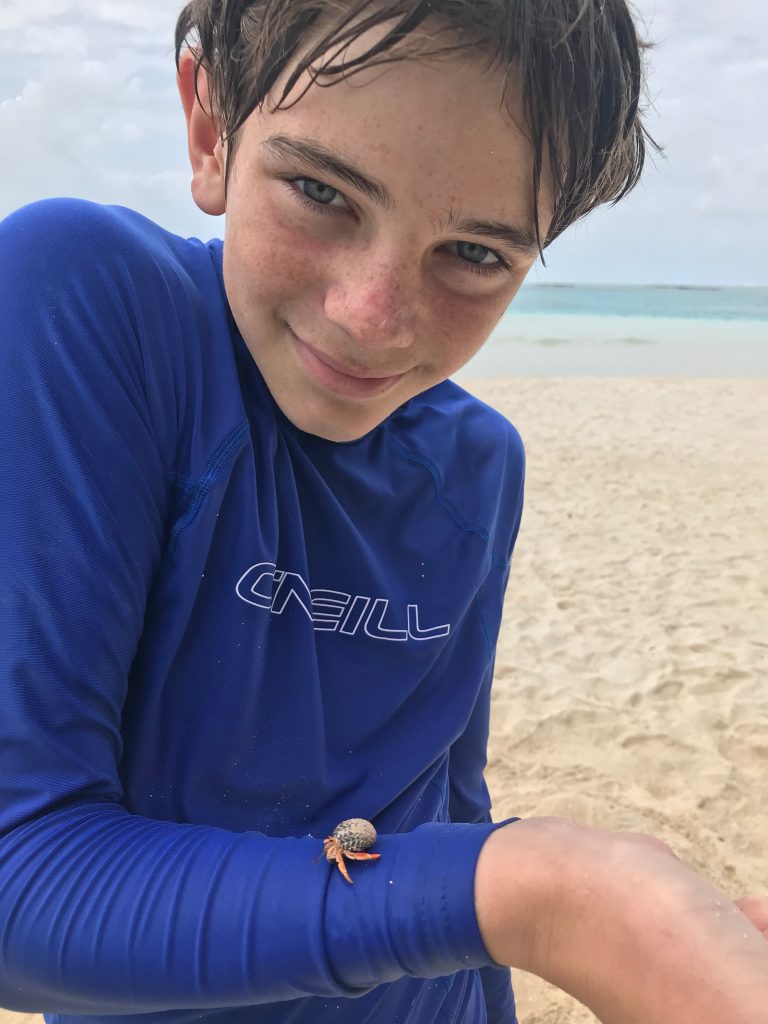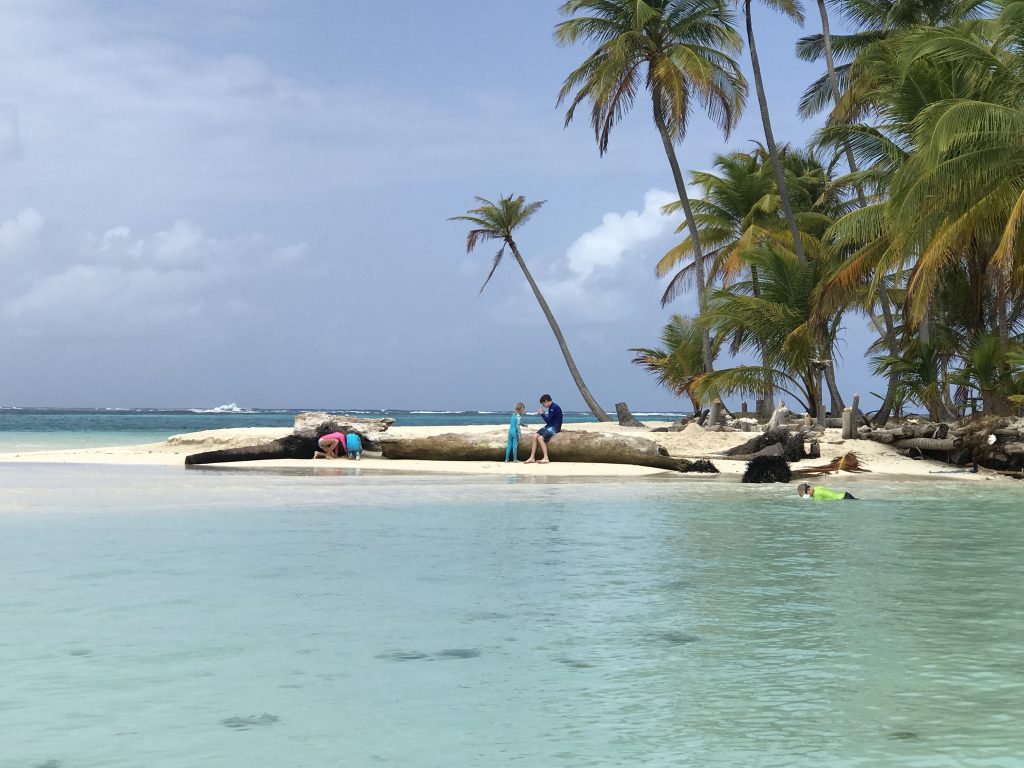It’s hard to describe the San Blas islands. When you picture a cartoon illustration of an island with white sand, coconut palms and turquoise waters? It’s like living in that for a few days. Add a dash of an interesting indigenous people and you have our experience since Santa Marta.
The San Blas, or “Guna Yala” as it is known by the people who live there, is a territory including 340 islands, as well as land on the Panamanian coast. The Guna people and their land are officially part of Panama but won their independence in 1925 and are governed autonomously via a general “congreso” of Kuna leaders and an overall leader called the “cacique.” Watch for more information on this via an interview Cobin conducted with a Guna man on one of the islands we visited.
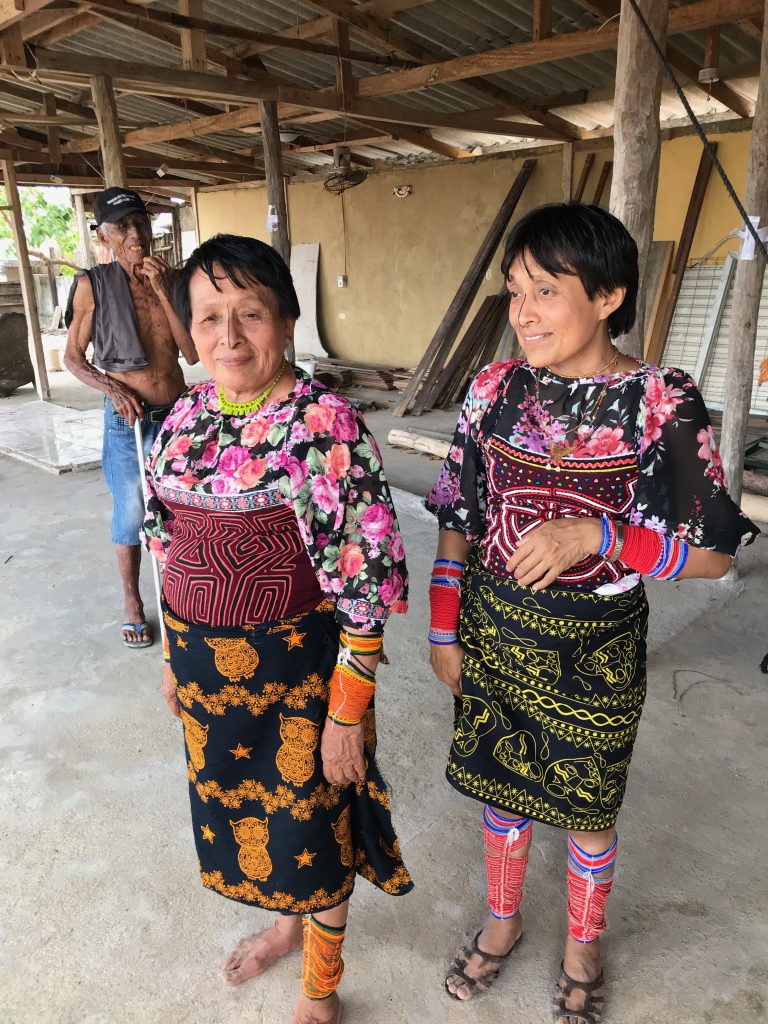
We toured 4 or 5 islands in the same number of days and had a fantastic time. Mainly we traveled in a group of 3 – 6 family boats from the ARC. The kids spent most days frolicking in the water and on the beaches of the various islands we visited and the grown-ups did whatever grown-ups do. I thought the snorkeling was spectacular, with some of the clearest waters and greatest variety of life I’ve ever seen in one place. I’m not educated enough on the names to list everything I saw but every time I went out, I saw something new. We saw giant starfish, eagle rays, manta rays, all kinds of reef fish, snails, clams, brain coral, sea fans, Christmas tree worms, sand dollars, sea biscuits, sea urchins, Portuguese man-of-war (is the plural men-of-war? Tully insists they are ‘Portupeas’), sea anemones, and all kinds of other things.

Since we have started learning about animal classification in Charm school, this has come in very handy. When we learned about Cnidarians, we went right out and found almost all of the animals we had talked about. Phylum Mollusca? No problem – snails galore were in the tide pools. It’s nice to have immediate reinforcement for what we’re learning!
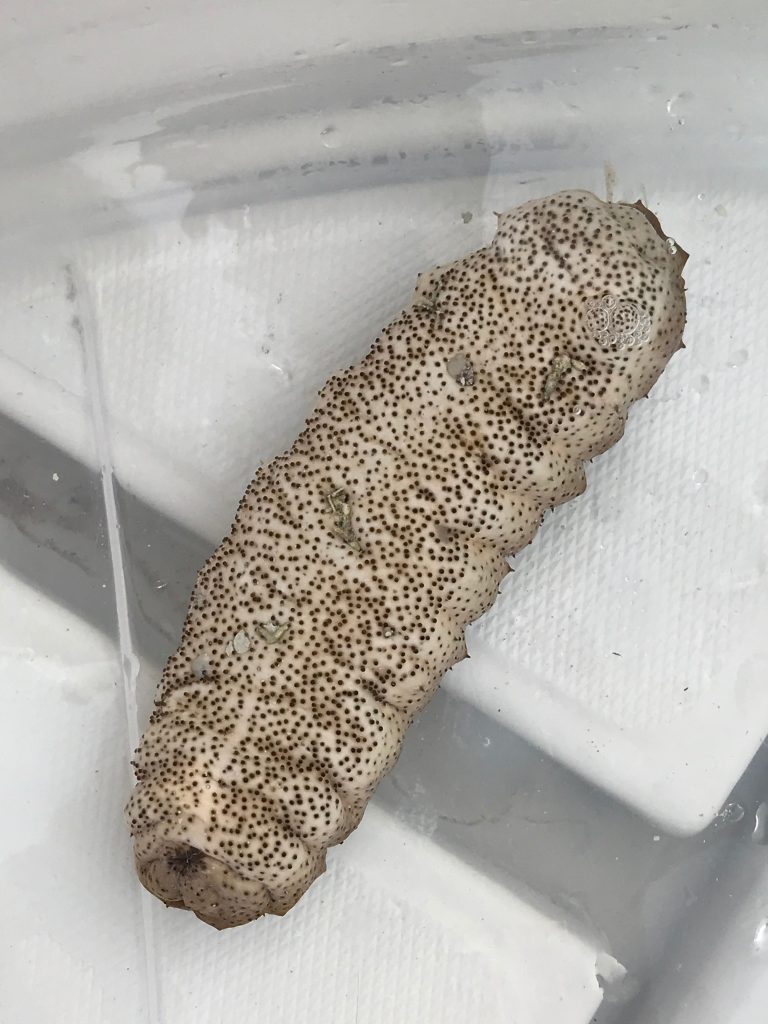
It will be hard to replicate those days of perfect weather, perfect sand, perfect water clarity (Cobin and I learned the word ‘pellucid’ to describe it), perfect number of mosquitoes (none), and perfect company (apart from the absence of all of you).
But they weren’t without their challenges. Several boats ran aground during our time there. Others had issues involving broken steering mechanisms, accidental gybes, dead auto-pilots, chart plotters derailed, etc. As the popular saying goes, cruising is just fixing boats in exotic locations.
We crossed the finish line around 6:30 pm and were listening to the radio net. A boat called in that was in the anchorage we were heading towards and was giving advice to the rest of the fleet. They said they would not recommend trying to anchor there at night or even “right now” (light was fading fast). We would have to anchor at night or spend 11 hours waiting for dawn. We motored slowly in, following our digital chart as well as the very useful Panama Crusing Guide by Eric Bauhaus. Due to the high humidity, our high-powered light only bounced off the mist so it was difficult even to see land vs water. We spent many tense minutes circling an area where there was a known coral head that either provided a good depth for anchoring or untold anguish if we hit it. Thankfully we didn’t hit it.
The day after visiting Dog Island to snorkel a wreck, we passed it en route to another island and saw a catamaran that had run badly aground several hundred feet from where we had anchored the day before. We only draw 3 feet which gives us lots of freedom of movement – perhaps too much, sometimes.
On our last night in the San Blas, we anchored in about 5 feet of water, mainly because we could. When we were pulling our anchor to leave at midnight, it came up wrapped around a log. Because it was so shallow, and the winds were light, the boat must have gone in a complete circle around the log. One of the most interesting things about living on a boat and something at which my husband excels is all the unique problems to solve. More about the saga of the log in another post!
A few days into the San Blas, our freezer chose to quit doing its job, which, as it turns out, makes life less pleasant, especially if you like ice cream. The prospect of crossing the Pacific with only canned meat kept Joe up at night, trying to solve the problem with 120-character texts to helpful souls back in the US. If I’m telling the whole story (and why wouldn’t I), Joe would probably eat canned meat without complaining if it meant one less thing to maintain. I think the prospect of hearing me and the kids complain all the way across the Pacific was the real motivation to solve the problem.
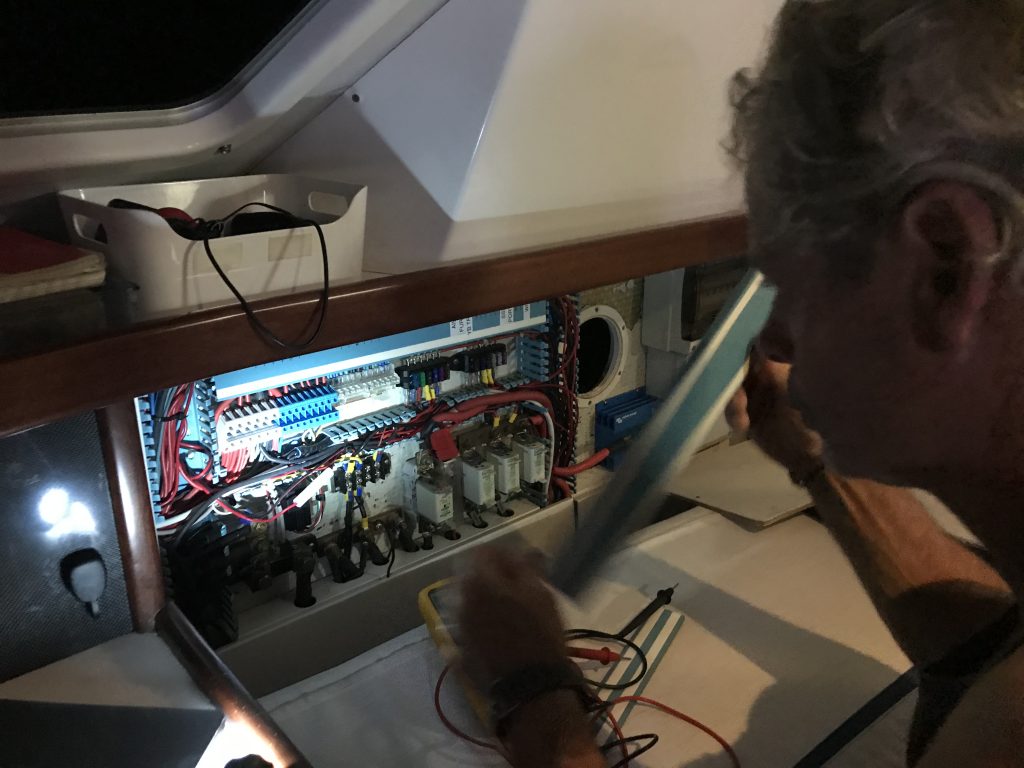
After disentangling the log, Joe motor-sailed us all the way to Shelter Bay Marina. My mother and the girls woke up as we approached the marina, somewhat surprised to have changed locations overnight. Shelter Bay has a delightful staff, a swimming pool, and supposedly, poisonous toads. Just in time for learning about the next group of animals!

